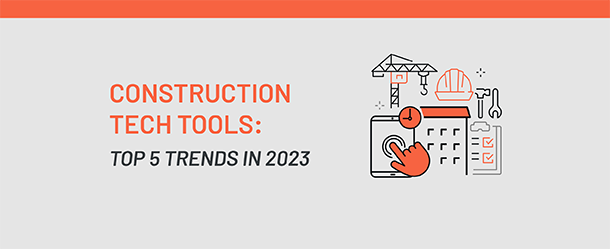



As technology around us rapidly advances, the construction industry is also making major strides. We are always researching new industry technologies, software, and devices so we can continue to advance our capabilities. These Top 5 Trends for 2023 were selected with our clients in mind, and we’re excited to implement them on job sites this year.
Computer Vision (CV) is an artificial intelligence that gathers information from pictures, videos, and any other visual aids. As systems grow smarter, CV will continue to build upon itself, providing increased value over time. With this technology, we can track all levels of project progress, down to the correct installation of an outlet. Some of the first ways we’re seeing CV in use is spotting proper and improper PPE wear. CV is also able to see how many workers are present, which trades are on site, the number and types of vehicles entering the site, materials being used, and how much progress was made over a period of time. MBP is excited to begin implementing CV in the upcoming year and to continue tracking its current and future capabilities to automate safety, progress reports, and more. We project that computer vision (CV) will advance the construction industry by offering stakeholders additional ways to view their projects. Whether it’s the ability to see the project in the space or to keep track of progress, we foresee it being a significant asset to the industry in 2023 and beyond.
Wearables can range from a hard hat, a vest, or simply utilizing a phone in your pocket. Since COVID-19, tracking and tracing infection exposure is crucial to productivity on job sites and in the office. Having to stop and conduct full contact tracing of exposure is often a complicated matter. With wearable technology, you can see if helmets or vests were within feet of each other for an extended amount of time and alert team members of possible contact. Wearables also provide insight into the wellbeing of employees, how they may be feeling, if they fall, or if they’re exposed to an element or sound which would require extra protection. It can also trace their overall production, if they are doing the work they have been tasked with, and if they are where they’re supposed to be. With such significant advances in technology over the last few years, it’s likely we will see significant progress in wearable technology in 2023.
For the last couple of years we’ve seen the advancement of several robotics, such as the Boston Dynamic Dog, 3D printed houses, or the laying of a simple brick wall. Robotics are not new to the construction world, but will continue to be seen in more and more places around a job site. A mix of wearables and robotics, exoskeletons are also being seen more frequently to help with worker safety. Construction layout robotics have the ability to draw directly onto the floor of a structure, marking the precise location where items are to be installed. Robotics on job sites will eventually be very timely and cost-effective, but will robots fully take over the job site one day? Probably not in our lifetimes, but we’ll never say never!
The rapidly growing scanning market will likely see significant developments in 2023. To put it simply, point cloud scanning is not what it used to be. You no longer need to set up large devices and move them from room to room to get high accuracy. Companies are producing better cameras, but more importantly, they are producing even better software to compute point clouds from a quick job site walk-through. Some people even have lidar scanners in their pockets, with Apple’s iPhone Pros! The software on the market can produce a high-resolution, colored point cloud in a matter of minutes to hours, depending on the complexity of the scan. This advancement in scanning will also increase the quality of the BIMs that they can produce. By harnessing point cloud capture, drafters can map existing buildings down to a millimeter or better.
If we’re being honest, computer programing can be a real pain. It is something that many people across all industries try to avoid. With low-code automation, that pain is greatly reduced. Low-code automation is created to be quick and easy as you pull prewritten snippets together. Gone are the days of trying to figure out the one period you may have missed on a line at the very beginning of the code. The development of this low-code idea was created to make coding more effective, but also to make it more accessible for the average user. Users can build scripts, automate functions, and modify existing workflows and applications, all with little training. The low-coding automation is created visually, so they are easier to understand.
We plan to leverage these new tools and test new technologies, software, and devices in 2023 that help to make construction management and site operations more efficient and sustainable. Do you have a favorite efficiency tool? Share it in the comments below!
Comments